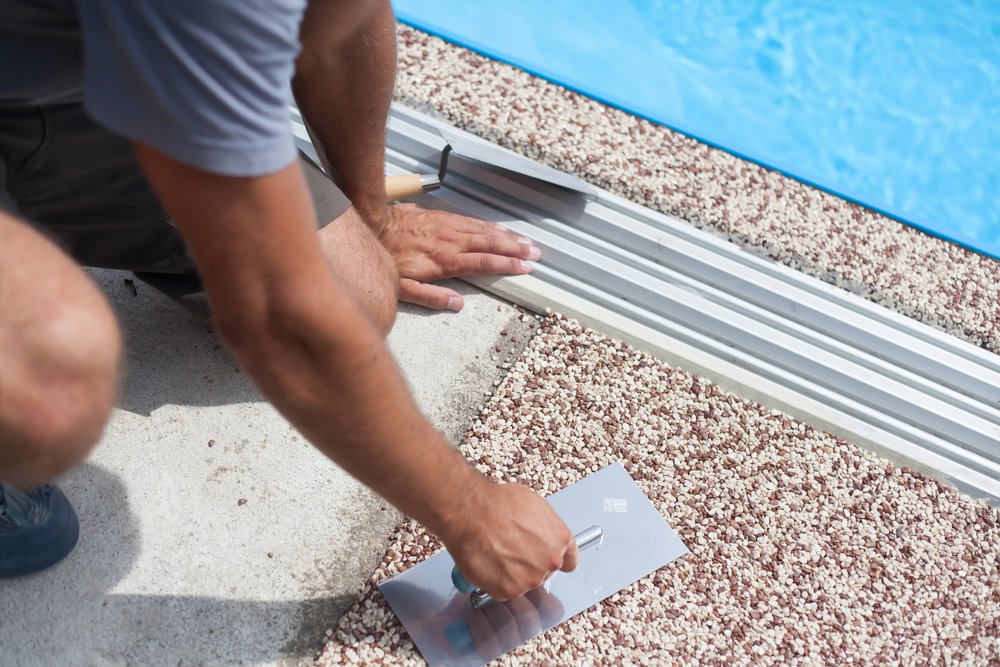Whether you’re a seasoned construction professional or a newbie in the building industry, one thing’s for sure: you want your project to stand out. You want to achieve a robust, long-lasting, and aesthetically pleasing finish. That’s where an exposed aggregate retarder steps into the picture. But what is an exposed aggregate retarder? How does it work? And, more importantly, how do you choose the right one for your project? Let’s delve into these questions and more.
Exposed aggregate retarder, a vital component in the world of concrete construction, serves a remarkable purpose in creating visually appealing surfaces. This unique chemical solution is applied onto freshly poured concrete, specifically designed to slow down the curing process of the top layer, allowing the underlying concrete to harden faster.
The magic happens when the retarded surface layer is later washed away, revealing the beautiful, textured aggregate beneath. The result? A stunning, hard-wearing surface that combines durability with aesthetic appeal. This technique opens up a realm of design possibilities, from driveways to patios, and even commercial spaces, adding a touch of sophistication that conventional concrete surfaces simply can’t match.
But, it’s not just about the aesthetics. Exposed aggregate retarder also enhances the functional value of the concrete. The exposed aggregate provides added grip, making the surface safer to walk or drive on, especially in wet conditions.
Understanding Exposed Aggregate Retarders
An exposed aggregate retarder, also known as a concrete surface retarder, is a product applied to freshly poured concrete. Its purpose? To delay the set of the concrete’s surface layer, allowing for aggregate exposure once the surface is washed. This process results in a decorative concrete finish, which is both visually appealing and highly durable.
The Benefits of Using an Exposed Aggregate Retarder
Using an exposed aggregate retarder offers several benefits. Firstly, it enhances the aesthetics of your construction project. With aggregate exposure, you achieve a unique, textured finish that’s far from the standard, smooth concrete look. Secondly, it’s a cost-effective solution. The use of a retarder eliminates the need for additional surface preparation and reduces the amount of aggregate required. Lastly, a retarder-treated surface offers improved skid resistance, making it safer for walking and driving.
Key Factors to Consider While Choosing an Exposed Aggregate Retarder
Choosing the right concrete retarder can be daunting, but considering these factors can help:
- Aggregate Size: The size of the aggregate you’re using in your mix impacts the choice of retarder. Different retarders are designed for different aggregate sizes.
- Weather Conditions: Weather plays a significant role in concrete setting. Choose a retarder that suits your local climate.
- Desired Depth of Exposure: Depending on the finish you want, you need to select a retarder that can achieve the desired depth of exposure.
- Compatibility: Ensure the retarder is compatible with other admixtures in your concrete mix.
Top Exposed Aggregate Retarders in the Market
Several top-notch exposed aggregate retarders are available today, each with their unique features. Some popular options include:
- Sika® Rugasol®: Known for its easy application and consistency, Sika® Rugasol® works well for both vertical and horizontal surfaces.
- Euclid Chemical EUCO Surface Retarder: With its non-flammable and VOC compliant properties, it’s a safe choice for many construction sites.
- WR Meadows Top Stop: This water-soluble retarder is known for its eco-friendly formulation and versatility.
Conclusion
In the realm of decorative concrete, an exposed aggregate retarder is a game-changer. It provides a cost-effective, long-lasting finish that enhances the aesthetics of any construction project. Remember, the key to choosing the right retarder lies in understanding your project requirements, considering key factors like aggregate size, weather conditions, desired exposure depth, and compatibility. With the right choice, you can achieve a finish that’s not just attractive but also durable and safe. Happy building!





